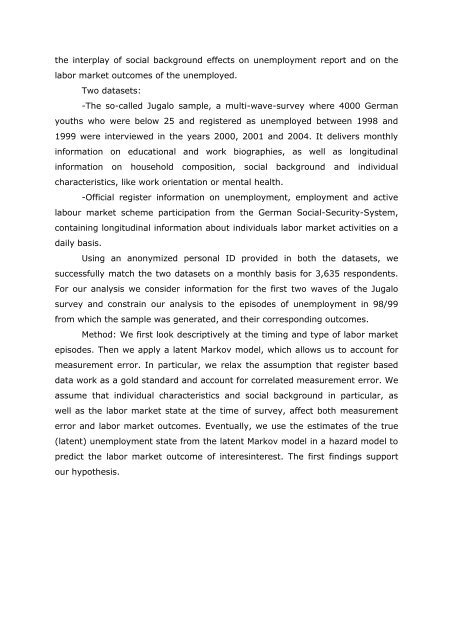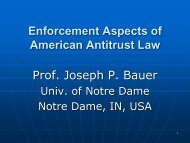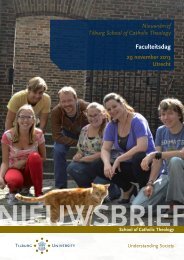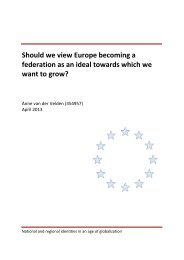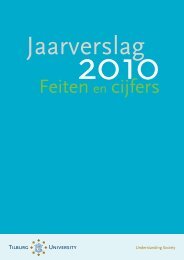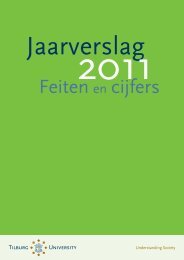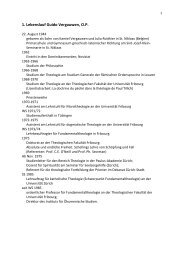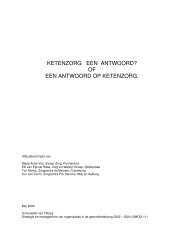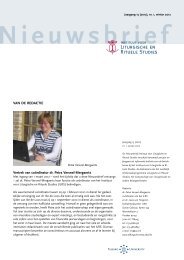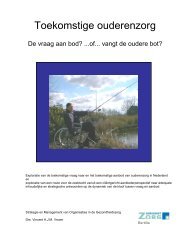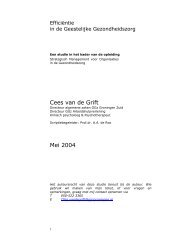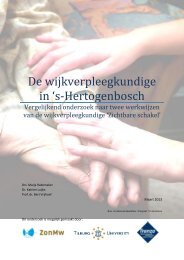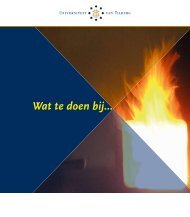Here - Tilburg University
Here - Tilburg University
Here - Tilburg University
Create successful ePaper yourself
Turn your PDF publications into a flip-book with our unique Google optimized e-Paper software.
the interplay of social background effects on unemployment report and on the<br />
labor market outcomes of the unemployed.<br />
Two datasets:<br />
-The so-called Jugalo sample, a multi-wave-survey where 4000 German<br />
youths who were below 25 and registered as unemployed between 1998 and<br />
1999 were interviewed in the years 2000, 2001 and 2004. It delivers monthly<br />
information on educational and work biographies, as well as longitudinal<br />
information on household composition, social background and individual<br />
characteristics, like work orientation or mental health.<br />
-Official register information on unemployment, employment and active<br />
labour market scheme participation from the German Social-Security-System,<br />
containing longitudinal information about individuals labor market activities on a<br />
daily basis.<br />
Using an anonymized personal ID provided in both the datasets, we<br />
successfully match the two datasets on a monthly basis for 3,635 respondents.<br />
For our analysis we consider information for the first two waves of the Jugalo<br />
survey and constrain our analysis to the episodes of unemployment in 98/99<br />
from which the sample was generated, and their corresponding outcomes.<br />
Method: We first look descriptively at the timing and type of labor market<br />
episodes. Then we apply a latent Markov model, which allows us to account for<br />
measurement error. In particular, we relax the assumption that register based<br />
data work as a gold standard and account for correlated measurement error. We<br />
assume that individual characteristics and social background in particular, as<br />
well as the labor market state at the time of survey, affect both measurement<br />
error and labor market outcomes. Eventually, we use the estimates of the true<br />
(latent) unemployment state from the latent Markov model in a hazard model to<br />
predict the labor market outcome of interesinterest. The first findings support<br />
our hypothesis.


